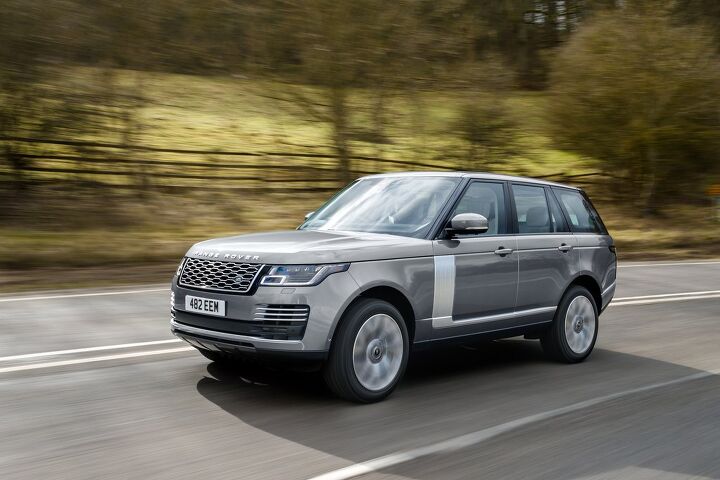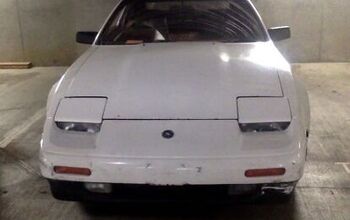Going Straight: 2020 Range Rover Swaps V6 for Inline Engine

After becoming the preferred choice for manufacturers delivering both mainstream autos and high-end performance vehicles, the V6 is starting to lose ground to its inline counterpart. Numerous automakers are replacing twin banks with one long one.
Despite the V6’s packaging advantages, mild hybridization and the standardization of modular engines has made the more-affordable straight six increasingly viable. Environmental regulations have also convinced many automakers to downsize, leaving large automobiles with V8-sized engine bays that can more easily accommodate a longer unit with fewer cylinders.
While Mercedes-Benz is probably the automaker best known for helping the I6’s resurgence, it’s not alone. Jaguar Land Rover is also abandoning the V6 for something straighter. Having already shown off its next-gen mill inside the Range Rover Sport HST, the brand now plans to install it in its flagship SUV for the 2020 model year.
The Jaguar-sourced V6 is gone; in its place is a 3.0-liter inline-six from JLR’s Ingenium engine family, using the predictable mild hybrid setup. According to the manufacturer, the change aims to promote “straight-six balance, refinement and efficiency” to further enhance the most-expensive Range Rover’s “peerless luxury and enduring appeal.”
Twin-charged, with the 48-volt hybrid recouping energy during coasting, JLR claims the 3.0-liter Ingenium is good for about 355 hp and 406 ft-lb of torque. That’s supposed to translate to a 0-60 time of 5.9 seconds and a top speed of 140 mph, which isn’t terrible for an automobile weighing in at two tons in its lightest configuration.
“Traditional Range Rover strengths have been heightened with the introduction of the latest 3.0-liter six-cylinder engine. Advanced technologies, such as Continuous Variable Valve Lift, work alongside a mild-hybrid system that harvests energy as you drive, to improve fuel efficiency and lower emissions,” said Nick Rogers, JLR’s executive director of product engineering. “The otherwise wasted energy is used to power the electric supercharger, which enhances vehicle capability by enhancing the torque curve at low engine speeds for greater responses. Superior comfort is achieved thanks to the natural mass balance of the engine, which allows it to run more smoothly.”
Land Rover says U.S. pricing, after destination, will start at $92,195. Of course, the brand is also happy to accommodate individuals looking to spend six figures to acquire more than six cylinders. While we cannot say for how long, the flagship Range Rover will remain available with the 518 hp, 5.0-liter V8 for $107,245. There’s also plenty of financial wiggle room between the two, with the company offering a 245 horsepower diesel and the P400e plug-in hybrid.
Athletic changes include optional 22-inch black wheels and a couple of swapped paint colors. Otherwise, the 2020 Land Rover Range Rover persists largely unchanged — as does the brand’s clumsy naming strategy for the model.
[Images: Jaguar Land Rover]

A staunch consumer advocate tracking industry trends and regulation. Before joining TTAC, Matt spent a decade working for marketing and research firms based in NYC. Clients included several of the world’s largest automakers, global tire brands, and aftermarket part suppliers. Dissatisfied with the corporate world and resentful of having to wear suits everyday, he pivoted to writing about cars. Since then, that man has become an ardent supporter of the right-to-repair movement, been interviewed on the auto industry by national radio broadcasts, driven more rental cars than anyone ever should, participated in amateur rallying events, and received the requisite minimum training as sanctioned by the SCCA. Handy with a wrench, Matt grew up surrounded by Detroit auto workers and managed to get a pizza delivery job before he was legally eligible. He later found himself driving box trucks through Manhattan, guaranteeing future sympathy for actual truckers. He continues to conduct research pertaining to the automotive sector as an independent contractor and has since moved back to his native Michigan, closer to where the cars are born. A contrarian, Matt claims to prefer understeer — stating that front and all-wheel drive vehicles cater best to his driving style.
More by Matt Posky
Latest Car Reviews
Read moreLatest Product Reviews
Read moreRecent Comments
- Calrson Fan Jeff - Agree with what you said. I think currently an EV pick-up could work in a commercial/fleet application. As someone on this site stated, w/current tech. battery vehicles just do not scale well. EBFlex - No one wanted to hate the Cyber Truck more than me but I can't ignore all the new technology and innovative thinking that went into it. There is a lot I like about it. GM, Ford & Ram should incorporate some it's design cues into their ICE trucks.
- Michael S6 Very confusing if the move is permanent or temporary.
- Jrhurren Worked in Detroit 18 years, live 20 minutes away. Ren Cen is a gem, but a very terrible design inside. I’m surprised GM stuck it out as long as they did there.
- Carson D I thought that this was going to be a comparison of BFGoodrich's different truck tires.
- Tassos Jong-iL North Korea is saving pokemon cards and amibos to buy GM in 10 years, we hope.






































Comments
Join the conversation
V6s are mostly vibratey beasts, devoid of character. The FCA v6 no match for the long departed Chrysler slant 6. Will we see an Ftype with this motor, thats the classic Jag layout. Even betetr with a stick. The V8 and autobox always seemed more grand tourer and overpowered. The Ftype with a inline 6 and stick, could be a classic.
Ah, 90’s design never looked so good. Also: Volvo S80 has an i6 and it’s so god damn smooth.